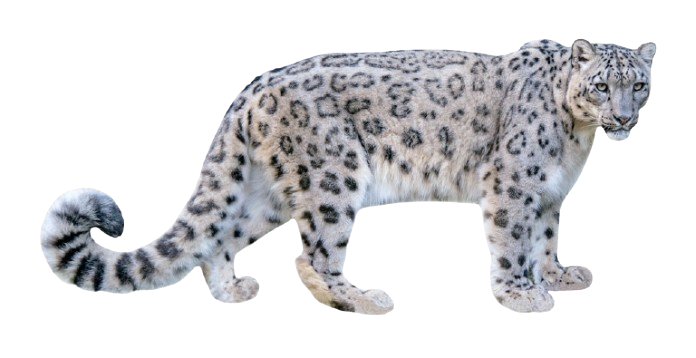Why in the News?
A new Stanford University-led study has revealed that the Snow Leopard has the lowest genetic diversity among all big cats, even lower than the Cheetah.

About Snow Leopard:
- Overview: Also called the “ghost of the mountains”; Belongs to the genus Panthera but genetically distinct from tigers and leopards, with unique adaptations for alpine life.
- Physical Features: Thick pale-gray fur with rosettes, powerful hind limbs, and a long, muscular tail that aids balance and warmth.
- Habitat: Found at altitudes between 3,000–5,500 metres, thriving in rugged, snow-covered mountain ranges and alpine meadows.
- Geographical Distribution:
- In India: Present in Ladakh, Himachal Pradesh, Uttarakhand, Sikkim, Arunachal Pradesh, and parts of Jammu & Kashmir.
- Globally: Distributed across Central and South Asian mountain systems, including the Himalayas, Pamirs, and Tien Shan.
- Population Status:
- Global estimate: 4,500–7,500 individuals.
- India: Approximately 718 individuals, representing 10–15% of the global total.
- Conservation Status:
- IUCN Red List: Vulnerable
- CITES: Appendix I
- Wildlife (Protection) Act, 1972 (India): Schedule I
- National Conservation Measures:
- Project Snow Leopard (2009): Integrates community participation in Himalayan conservation.
- SECURE Himalaya Project (GEF–UNDP): Focuses on sustainable ecosystem management.
- Himalaya Sanrakshak (2020): Enlists local guardians for high-altitude habitats.
- National Protocol on Population Assessment (2019): Ensures standardized monitoring.
Ecological Significance:
- Apex Predator Role: Serves as the top carnivore in the Himalayan and Central Asian alpine ecosystems, maintaining the balance between herbivores like blue sheep, ibex, and argali.
- Indicator of Ecosystem Health: Its presence reflects ecosystem integrity, as it thrives only in undisturbed, well-connected, prey-rich habitats.
- Climate Regulation: Snow leopard landscapes, glaciers, permafrost zones, and alpine grasslands, act as major carbon sinks and regulate water flows to nearly two billion people across Asia.
- Biodiversity Link: By controlling herbivore populations, it prevents overgrazing, thus preserving alpine vegetation and soil stability.
- Cultural and Economic Value: Revered in Himalayan folklore and central to eco-tourism-based livelihoods, symbolizing coexistence between humans and nature.
- Transboundary Importance: Its habitat spans across 12 range countries, making it a flagship species for international cooperation under the Global Snow Leopard and Ecosystem Protection Programme (GSLEP).
| [UPSC 2012] Consider the following:
1. Black-necked crane 2. Cheetah 3. Flying squirrel 4. Snow leopard Which of the above are naturally found in India? Options: (a) 1, 2 and 3 only (b) 1, 3 and 4 only* (c) 2 and 4 only (d) 1, 2, 3 and 4 |
Get an IAS/IPS ranker as your 1: 1 personal mentor for UPSC 2024

